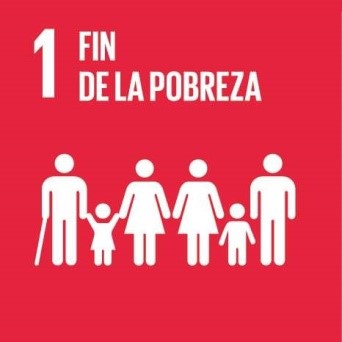
https://www.un.org/sustainabledevelopment/es/poverty/
SDG 1: End poverty in all its forms everywhere in the world
Development Studies UNESCO's Chair
Although the global poverty rate has halved since 2000, one in ten people and their families in developing regions still live on $1.90 a day, with millions more earning little more than this daily amount. Significant progress has been made in many countries in East and Southeast Asia, but nearly 42 per cent of the population in sub-Saharan Africa continues to live below the poverty line.
Poverty goes beyond a lack of income and resources to ensure sustainable livelihoods. Poverty is a human rights issue. The different manifestations of poverty include hunger, malnutrition, lack of decent housing and limited access to other basic services such as education or health. They also include discrimination and social exclusion, including the lack of participation of the poor in decision-making, especially decisions that affect them.
To achieve the goal of ending poverty, economic growth must be inclusive in order to create sustainable jobs and promote equality. Social protection systems must be implemented to mitigate risks in disaster-prone countries and provide support to cope with economic hardship. These systems will help strengthen the responses of affected populations to unexpected economic losses during disasters and ultimately help eradicate extreme poverty in the most impoverished areas.
Outstanding data
|
Goal 1 targets
1.1 By 2030, eradicate extreme poverty for all people in the world, currently measured by an income per person of less than $1.25 per day. 1.2 By 2030, reduce by at least half the proportion of men, women and children of all ages living in poverty in all its dimensions according to national definitions. 1.3 Implement nationally appropriate social protection systems and measures for all and, by 2030, achieve comprehensive coverage of the poor and most vulnerable. 1.4 By 2030, ensure that all men and women, in particular the poor and most vulnerable, have equal rights to economic resources, as well as access to basic services, ownership and control over land and other property, inheritance, natural resources, new technologies and economic services, including microfinance. 1.5 By 2030, build the resilience of the poor and people in vulnerable situations and reduce their exposure and vulnerability to climate-related extreme events and other economic, social and environmental disasters. 1.a Ensure significant mobilisation of resources from various sources, including through enhanced development cooperation, in order to provide adequate and predictable means for developing countries, in particular the least developed countries, to implement programmes and policies to end poverty in all its dimensions. 1.b Create sound policy frameworks at the national, regional and international levels, based on pro-poor and gender-sensitive development strategies, to support accelerated investment in poverty eradication measures. |










